Who is the woman depicted in this painting? Who is the author of this painting?
While we are quite sure about the answer to the latest question, the mystery remains for the first one.
For a curious joke of the destiny, one of the most famous paintings in the world remains unknown in its profound essence.
Shortly before Leonardo‘s death, his pupil Salaì returned to Milan in April 1518 [1].
We known that a painting called La Gioconda existed, because it is mentioned in a document discovered in the Archivio di Stato di Milano in 1990, which dates back to 1525 [2].
When Salaì died, his two sisters took his legacy and made an inventory to divide the goods. In this inventory we read, among the other things:
“Quadro dicto una Ledde n° 1 – sc. 200 l. 1010 s.-d. Quadro de Santa Anna n° 1 – sc. 100 l. 505 s.-d. Quadro de una dona aretrata n° 1 (dicto la Honda) dicto la Ioconda”
(Painting called a Ledde n° 1 – sc. 200 l. 1010 s.-d. Painting of St. Anne n° 1 – sc. 100 l. 505 s.-d. Painting of an arrear woman n° 1 (called la Honda) called la Ioconda).
So there is evidence that a painting referred to as la Ioconda was in Salaì’s legacy at his death. Shell and Sironi then speculated that Salaì returned with him Leonardo’s paintings from the Château du Clos Lucé [2].
We also know, from a report of Antonio de Beatis [3], secretary of the cardinal Luigi d’Aragona, that Leonardo showed to these guests three paintings, when they visited him on October 10 1517 in Cloux. In his diary he wrote:
“In uno di li borghi el sig.re co noi altri ando ad veder ms. Lunardo Vinci firentino, vecchio de più de LXX anni, pittore ì la eta nostra excell.mo, quali mostrò ad sua s. Ill.ma tre quatri, uno di certa donna firentina, facta di naturali ad instantia del quodam Mag.co Jiuliano di Medici. L’altro di San Joanni Bap.ta giovan., et uno di la Madona et dil figliolo, che stan posti in gremo di S.ta Anna: tucti perfectissimi“.
(In one of the boroughs the Lord went to see with me Sir Leonardo da Vinci florentine, more than 70 years old [Leonardo was 65], excellent painter of our time, who showed to his most illustrious lordship three paintings: one of some florentine woman, natural made at the instance of the late Magnificent Jiuliano de Medici. The other of the youth Saint John the Baptist, and one of the Madonna and the Son, who are placed in the lap of Saint Anne: all the most perfect).
In the third edition of the Vocabolario degli Accademici della Crusca (1691) dipingere al naturale means “Painting, or drawing [Painters], portraying true, and natural objects, whence natural absolut. is said the Figure, and natural object, from which the painter draws his work.“. Perhaps de Beatis means that Leonardo made is painting from life.
While we could recognize in this account of the visit two paintings now at the Louvre (St. John the Baptist and The Virgin and Child with St. Anne), there is no certainty about the first painting.
The painting mentioned in the Salaì’s testament as “quadro de una dona aretrata” (literally, painting of an arrear woman), is highly estimated: 100 scudi and 500 soldi. It is interesting to note that this price is twice that of two diamonds and twice that of an emerald that are included in the same inventory. Since this was a very high amount of money, it was speculated that maybe this painting was the original Leonardo’s artwork.
Just to feed the confusion, a document discovered in 1998, always in the Archivio di Stato di Milano [4], dated December 28 1531, includes a list of nine paintings that Lorenziola (a Salaì’s sister), gave to Ambrogio da Vimercate as a pawn for a debt with Gerolamo da Sormano. In another document [5], these nine paintings, which included the so called Gioconda, are estimated only 241 lire imperiali (equal to 26 scudi), while in the 1525 inventory they were evaluated 1590 lire imperiali (equal to 315 scudi). The question arose whether these paintings were copies made by Salaì, and not Leonardo’s originals.
Another document, found in the Archives Nationales of Paris [6], reports a very high amount payment, for the years 1517-1518, of 2604 lire tornesi, from the King’s treasurer Jean Sapin, to “messire Salay de Pietredorain” (gentleman Salaì di Pietro d’Oreno) “pour quelques tables de paintures qu’il a baillées au Roy” (for some tables of paintings that he leased to the King). Villata and Marani [7] pointed out that it could be very strange if Salaì had making money for himself by selling some Leonardo’s paintings to the King, Leonardo alive, considering also that Leonardo has a fixed salary from the King, 700 scudi per year, as reported by Pedretti in 1957.
So we cannot exclude that Leonardo’s paintings, Monna Lisa included, did return back to Milan somewhen between 1525 and 1531.
Maybe the painting mentioned in the 1525 inventory is really Leonardo’s Monna Lisa. According to Giorgio Vasari [8]:
“Prese Lionardo a fare per Francesco del Giocondo il ritratto di mona Lisa sua moglie; e quattro anni penatovi, lo lasciò imperfetto; la quale opera oggi è appresso il re Francesco di Francia in Fontanableò”
(Leonardo started to paint for Francesco del Giocondo the portrait of his wife Lisa; and four years having trouble with it, he left it unfinished; that work is now with King Francis I of France in Fontainebleau).
In 2005, while cataloguing the book for an incunabula exhibit at the Heidelberg University Library (shelf mark D 7620 qt. INC [23]), Armin Schlechter made a discovery that could confirm the reliability of Vasari’s account [10, 11, 22, 24]. In a note in the margin of Cicero‘s Epistolae ad familiares (which was printed in Bologna, 1477), where the author makes a comparison by naming the Greek painter Apelles, Agostino Vespucci (a Florentine chancellery official, assistant to Niccolò Machiavelli, and Amerigo Vespucci‘s cousin) wrote:
“Apelles pictor. Ita Leonardus Vincius facit
in omnibus suis picturis, ut enim caput
Lise del Giocondo et Anne matris virginis.
Videbimus, quid faciet de aula magni consilii,
de qua re convenit iam cum vexillifero. 1503. 8.bris”
(Apelles the painter. That is the way Leonardo da Vinci does it with all of his pictures, like, for example, with the countenance of Lisa del Giocondo and that of Anne, the mother of the Virgin. We will see how he is going to do it regarding the great council chamber, the thing which he has just come to terms about with the gonfaloniere. October 1503)
Interestingly, in Vespucci’s note there are references not only to the Monna Lisa, but also to two other works by Leonardo, namely The Virgin and Child with Saint Anne (the Heidelberg’s incunabulum was displayed at the Louvre exhibition for the restoration of that version of the subject, March 29-June 25, 2012 [9]) and the Battle of Anghiari.
We do not know if Vasari did ever see the painting (maybe if and when it was returned back to Milan in 1524-1531 with Salaì), but he cites the eyebrows of the woman, while the Monna Lisa has no eyebrows. According to the Anonimo Gaddiano though (1540), Leonardo made a portrait of Francesco del Giocondo. Giovan Paolo Lomazzo, friend and frequenter of Francesco Melzi, in his Trattato dell’arte della pittura, scoltura, et architettura (1584) [25] cites la Gioconda and Monna Lisa as two different paintings:
“Cotali sono gli avvertimenti del comporre i ritratti in generale, & in particolare, i quali quanto siano necessari massime nel rappresentare gl’ornamenti, gl’atti, & gesti convenienti á Principi à virtuosi, & alle femine che si ritranno, si può comprendere ne’ ritratti fatti da gl’eccellenti pittori, per altro ancora famosissimi, & da celebri scoltori. Fra i quali si veggono quelli di mano di Leonardo, ornati à guisa di primavera come il ritratto della Giocóda, & di Mona Lisa, ne’ quali hà espresso trà l’altre parti maravigliosamente la bocca in atto di ridere…”
(Such are the warnings of composing portraits in general, and in particular, which how necessary they are above all in representing the ornaments, acts, and gestures appropriate to Princes, virtuous men, and females to be portrayed, may be understood in the portraits made by the excellent painters, for that matter still famous, and by celebrated sculptors. Among whom are seen those by the hand of Leonardo, ornamented in the guise of a spring like the portrait of the Gioconda, and of Mona Lisa, in which he has expressed among other parts wonderfully the mouth in the act of laughing…)
In 1590, Lomazzo wrote in his Idea del tempio della pittura [26] (cited by Pedretti [3]):
“Il che chi desidera di veder nella pittura, miri l’opere finite, (benche siano poche) di Lionardo Vinci, come la Leda ignuda, & il ritratto di Mona Lisa Napoletana, che sono nella fontana di Beleo in Francia, e conoscerà quanto l’arte superi, & quanto sia più potente in tirare à se gli occhi de gli intendenti, che l’istessa natura.“.
(Which whoever desires to see in painting, admire at the finished works, (though they are few) of Lionardo Vinci, such as the Leda ignuda, and the portrait of Mona Lisa Napoletana, which are in Fontainebleau in France, and will know how much art surpasses, and how much more powerful it is in drawing to itself the eyes of the experts, than nature itself.)
Moreover, if we trust the account by Antonio de Beatis from his visit to Leonardo in 1517, maybe he is not speaking about the Monna Lisa, since he writes about a portrait of a florentine woman made by Leonardo upon commission by Giuliano de’ Medici, who was Leonardo’s patron in Rome in 1513-1515, and not by Monna Lisa’s husband, Francesco del Giocondo, as Vasari reports.
About in 1505, Raphael made a sketch of the Monna Lisa that looks different from the one in the Louvre. This led to speculation that there were two different portraits of Monna Lisa.
According to Franck Zöllner [12], Leonardo was relatively free of commitments from the end of 1502 to the summer of 1503, so he could accept Francesco del Giocondo’s request to paint a portrait for his wife.
It is also possible that Leonardo effectively worked more than four years on the painting. At this regard, there is a drawing made with red chalk, now in the Royal Library at Windsor Castle (n. 12409 recto), depicting a storm on a valley (maybe a view of the Valtellina) that could be related to the mountains to the left of Monna Lisa [13], dated around 1499-1500, or 1506 [14] or 1500-1502 (cfr. Pedretti).
It has been argued that Leonardo’s continued working for many years on the painting, considering the similarity of the landscape of the Monna Lisa with that of the St. Anne of the Louvre (which is dated 1510-1513). There is a drawing in the Codice Atlantico in the Biblioteca Ambrosiana of Milan (fol. 864 recto, ex fol. 315 recto-a), dated around 1513-1515, that shows a study for a left eye and some strands of hair that could be related to La Gioconda [15].
The Monna Lisa was probably in Fontainebleau in 1542 [16], but there is no certainty about it, because no inventory or source reports its presence.
According to a very late report by Pierre Dan [17] the king paid 12000 french franc to get the painting, while Cassiano dal Pozzo saw “tal Gioconda” in Fontainebleau in 1625 and wrote “dalla parola in poi altro non gli manca” (excluding the speaking she doesn’t miss anything).
Enea Hirpino wrote (cfr. Canzoniere, 1520) about a portrait of Costanza d’Avalos, made by Leonardo, who painted “lei sotto il bel negro velo” (her under the beautiful black veil), so the name of this woman born in Naples can’t be excluded from the hypotheses, also considering the words by Lomazzo.
Carlo Pedretti proposed [3] to identify the woman in the painting with Pacifica Brandano, that died in childbirth in 1511 (the son was the future Cardinal Ippolito de’ Medici, only illegitimate son of Giuliano de’ Medici). Maybe what de Beatis and the cardinal saw was not La Gioconda, but the portrait of a naked courtesan, Pacifica Brandano, since he writes “facta di naturale” (made as natural) that indeed could be interpreted as nude. A model for the painting could be see in a cartoon (Monna Vanna?) now at Musée Condé in Chantilly, which has some painted versions [18].

Cartoon of a nude woman after Leonardo’s lost original? – Musée Condé in Chantilly – This painting is supposed to come from Leonardo’s workshop. It was speculated that it was painted after the original that Leonardo made for his patron Giuliano de’ Medici.
Tanaka argued that the woman of the painting could be Isabella d’Este [19]. Pedretti, following the above cited report from de Beatis (he wrote that the day after the visit to Leonardo he saw a portrait in Blois, not so beautiful as that of “signora Gualanda”), made the hypothesis that the woman could be Isabella Gualanda, born in Naples in 1491 from a pisan family [20, 21].
In summary, speaking about the Louvre painting, we do not know who the woman of the portrait is, we do not know when it was started, we do not know who commissioned it to Leonardo, and we do not know how long Leonardo did work on it.
Finally, we don’t even know how the painting came to King Francis I. We know that King Francis had a great consideration for Leonardo. Benvenuto Cellini wrote in his Discorso dell’Architettura
“E perché egli era abbondante di tanto grandissimo ingegno, avendo qualche cognizione di lettere latine e greche, il Re Francesco, essendo innamorato gagliardissimamente di quelle sue gran virtù, pigliava tanto piacere a sentirlo ragionare, che poche giornate dell’anno si spiccava da lui; qual furno causa di non gli dar facoltà di poter mettere in opera quei sua mirabili studii, fatti con tanta disciplina. Io non voglio mancare di ridire le parole, che io sentii dire al Re di lui, le quali disse a me, presente il cardinal di Ferrara e il cardinal di Loreno e il Re di Navarra: disse, che non credeva mai, che altro uomo fusse nato al mondo, che sapesse tanto quanto Lionardo, non tanto di Scultura, Pittura e Architettura, quanto ch’egli era grandissimo Filosofo.”
(And since he was abundant with such great wit, having some knowledge of Latin and Greek letters, King Francis, being most galliardly enamored of those great virtues of his, had so much pleasure in hearing him reason, that a few days a year he would be away from him; which was the cause of not giving him the faculty to be able to put into operation those admirable studies of his, made with such discipline. I will not miss to repeat the words, which I heard the King say of him, which he said to me, the Cardinal of Ferrara and the Cardinal of Lorraine and the King of Navarre being present: he said, that he never believed, that any other man was born in the world, who knew as much as Lionardo, not so much of Sculpture, Painting and Architecture, as that he was a very great Philosopher).
Despite the tradition tells that the King paid for this painting, there is no proof at all for this claim. This is so incontestable that the Louvre official website too has to admit that “It was eventually returned to Italy by Leonardo’s student and heir Salai. It is not known how the painting came to be in François I’s collection“.
Then, if no sensational document will appear from some archive to reveal the truth, the secret of Monna Lisa will remain with Leonardo.
The mystery continues.
[UPDATE 14-05-2015] The Louvre has removed the statement from the web page.
References:
1) B. Jestaz, François Ier, Salaì et les tableaux de Léonard de Vinci, in “Revue de l’art”, 126, 4, 1999, pp. 68-72)
P. C. Marani, La Gioconda, Art e Dossier, Giunti, 2014.
2) J. Shell, G. Sironi, Salaì and Leonardo’s Legacy, in “The Burlington Magazine”, february 1991, pp. 95-108.
3) C. Pedretti, Storia della Gioconda, in Studi Vinciani. Documenti, analisi e inediti leonardeschi, Ginevra 1957.
4) V. Longoni, Umanesimo e Rinascimento in Brianza. Studi sul patrimonio culturale, Milano 1998.
5) E. Villata, Leonardo da Vinci. I documenti e le testimonianze contemporanee, Milano 1999.
6) B. Jestaz, François Ier, Salaì et les tableaux de Léonard de Vinci, in “Revue de l’art”, 126, 4, 1999, pp. 68-72.
7) E. Villata, Leonardo da Vinci. I documenti e le testimonianze contemporanee, Milano 1999 and P. C. Marani, in F. Viatte, V. Forcione, Dessins et Manuscrits de Léonard de Vinci, Parigi 2003.
8) G. Vasari, “Le vite de’ più eccellenti pittori, scultori e architettori“, 1550, 1568.
9) V. Delieuvin, La “Sainte Anne” d’Agostino Vespucci, in La “Sainte Anne”, l’ultime chef-d’oeuvre de Léonard de Vinci, catalogue de l’exposition, sous la direction de V. Delieuvin, Paris-Milano, Musée du Louvre-Officina Libraria, 2012, pp. 117-19.
10) A. Schlechter, “Ita Leonardus Vincius facit in omnibus suis picturis”. Leonardo da Vincis Mona Lisa und die Cicero-Philologie von Angelo Poliziano bis Johann Georg Graevius, IASLonline. http://www.iaslonline.de/index.php?vorgang_id=2889
11) A. Schlechter, Leonardo da Vinci’s “Mona Lisa” in a Marginal Note in a Cicero Incunable, in Early Printed Books as Material Objects, Conference Proceedings (Munich, 19-21 August 2009), ed. by B. Wagner and M. Reed, The Hague, IFLA – International Federation and Library Association, 2010, pp. 151-76.
12) F. Zöllner, Leonardo’s Portrait of Mona Lisa del Giocondo, in “Gazette des Beaux-arts”, 1490, march 1993, pp. 115-138.
13) K. Clark, The Drawings of Leonardo da Vinci in the Collection of Her Majesty the Queen at Windsor Castle, second edition revised with the supervision of C. Pedretti, London 1968.
14) M. Kemp, in Leonardo da Vinci, editors M. Kemp and J. Roberts, London 1989.
15) C. Pedretti, The Codex Atlanticus of Leonardo da Vinci. A Catalogue of Its Newly Restored Sheets, parte seconda, New York 1979.
16) Abbé Guilbert, Description historique des chateau, bourg et forest de Fointanebleau, 2 voll., Parigi 1731, vol. I, pp. 153-159, cited by Zollner 1993, p. 116 and note 19 p. 131.
17) Dan, Le Trésor des merveilles de la Maison Royale de Fontainebleau, 1642.
18) D. A. Brown, K. Oberhuber, Monna Vanna and Fornarina. Leonardo and Raphael in Rome, in Essay Presented to M. P. Gilmore, edited by S. Bertelli and G. Ramakus, Firenze 1978, pp. 25-86.
19) H. Tanaka, Leonardo’s Isabella d’Este. A New Analysis of the Mona Lisa in the Louvre, in “Annuario dell’Istituto Giapponese di Cultura in Roma”, 13 1976-1977, 1977, pp. 23-35.
20) C. Pedretti, Leonardo. A Study in Chronology and Style, Londra 1973 and C. Vecce, Leonardo, Roma 1998.
21) C. Vecce, La Gualanda, in “Achademia Leonardi Vinci. Journal of Leonardo Studies and Bibliography of Vinciana”, vol. III, 1990.
22) Marco Versiero. “L’epistolario ciceroniano postillato da Agostino Vespucci: Leonardo a Firenze, tra Poliziano e Machiavelli. Pio II nell’epistolografia del Rinascimento”, Jul 2013, Pienza, Italy. https://shs.hal.science/halshs-01383013
23) Cicero, Marcus Tullius, “Epistulae ad familiares”, Bologna, 1477. Universitätsbibliothek Heidelberg. https://digi.ub.uni-heidelberg.de/diglit/cicero1477/0023/image,info
24) “Mona Lisa – Heidelberg discovery confirms identity”. https://web.archive.org/web/20081231223408/https://www.ub.uni-heidelberg.de/Englisch/news/monalisa.html
25) G. P. Lomazzo, Trattato dell’arte della pittura, scoltura, et architettura, Milano 1584, p. 434. https://archive.org/details/trattatodellarte00loma/page/434/mode/2up
26) G. P. Lomazzo, “Idea del tempio della pittura nella quale egli discorre dell’origine e fondamento delle cose contenute nel suo trattato dell’arte della pittura”, Milano, 1590, p. 6. https://archive.org/details/bub_gb_YC59KugXgdQC

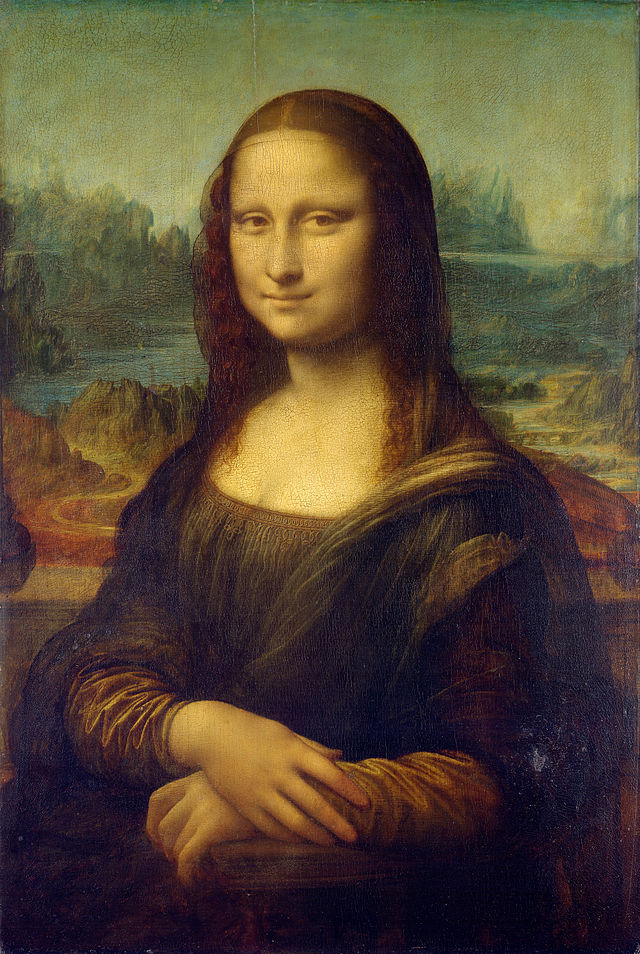
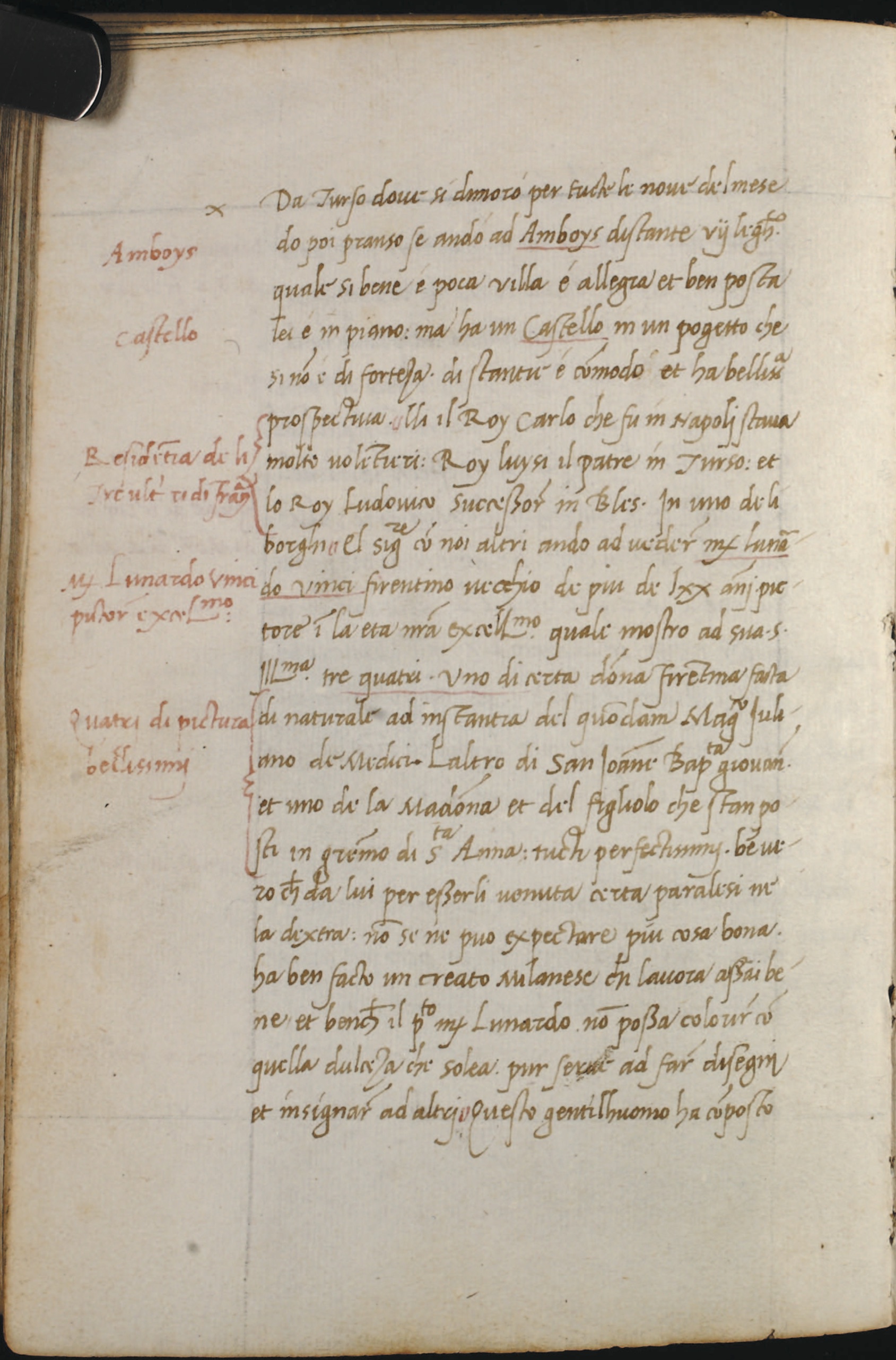

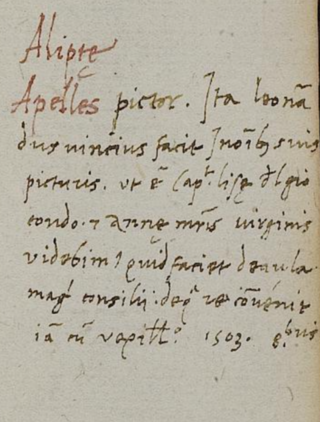
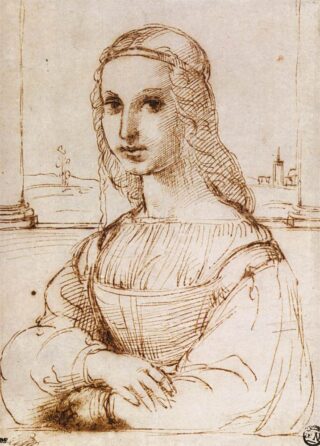
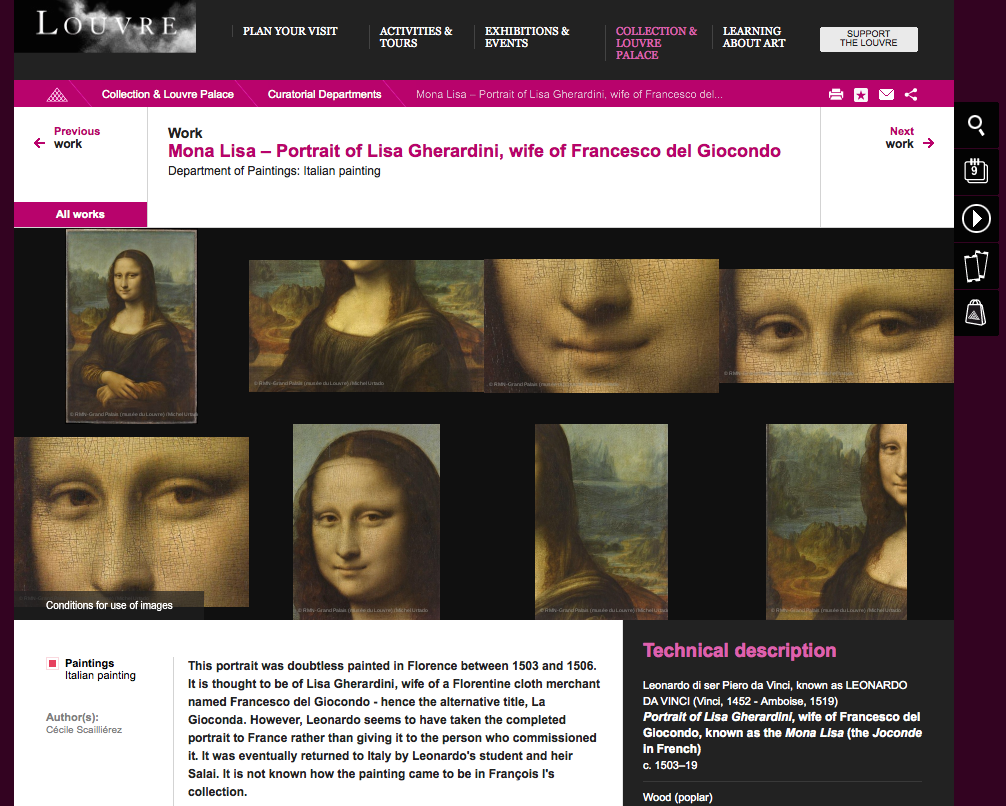
2 Responses to The mystery of Monna Lisa